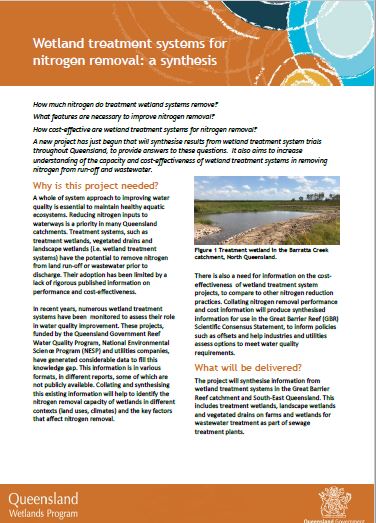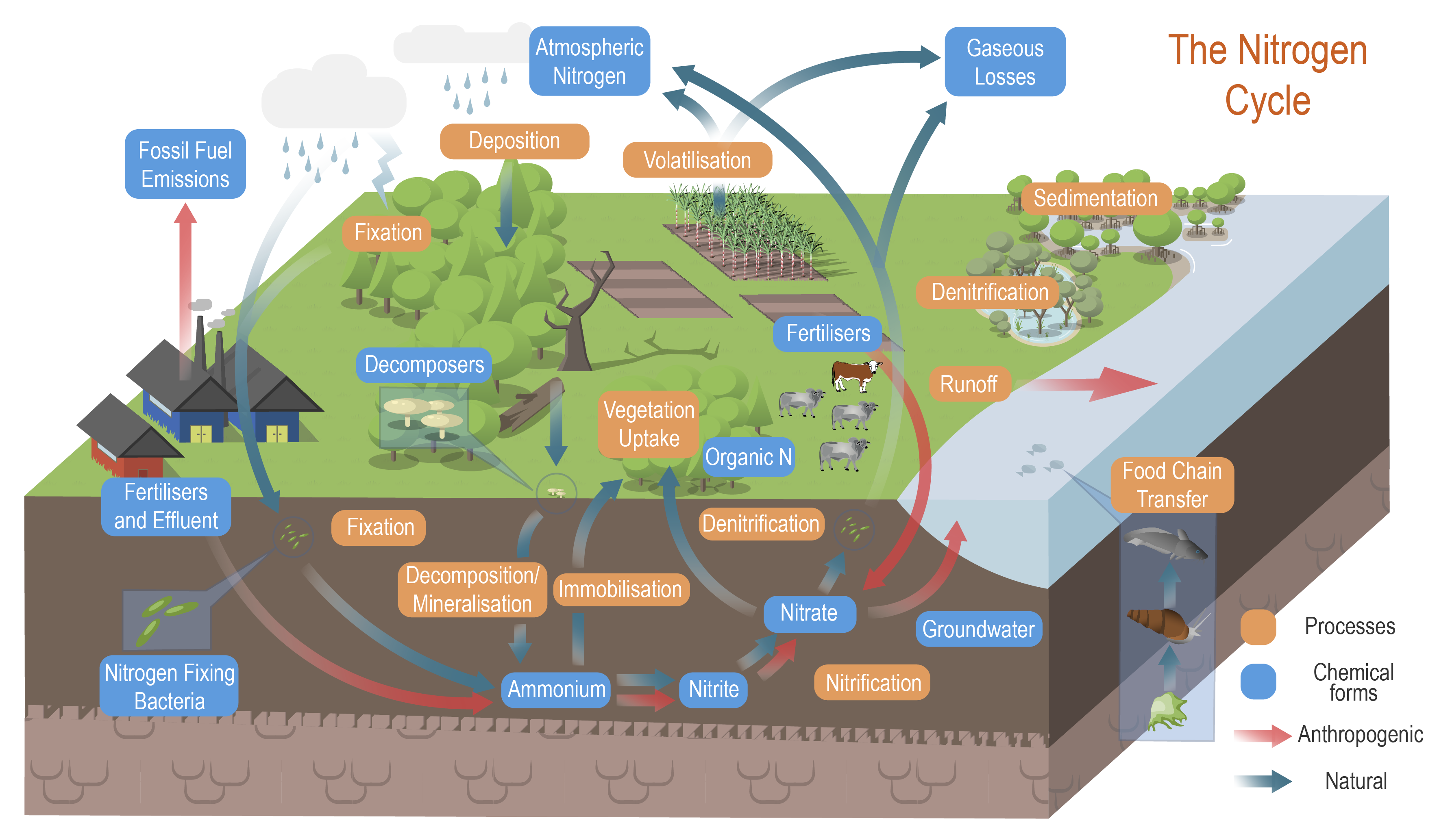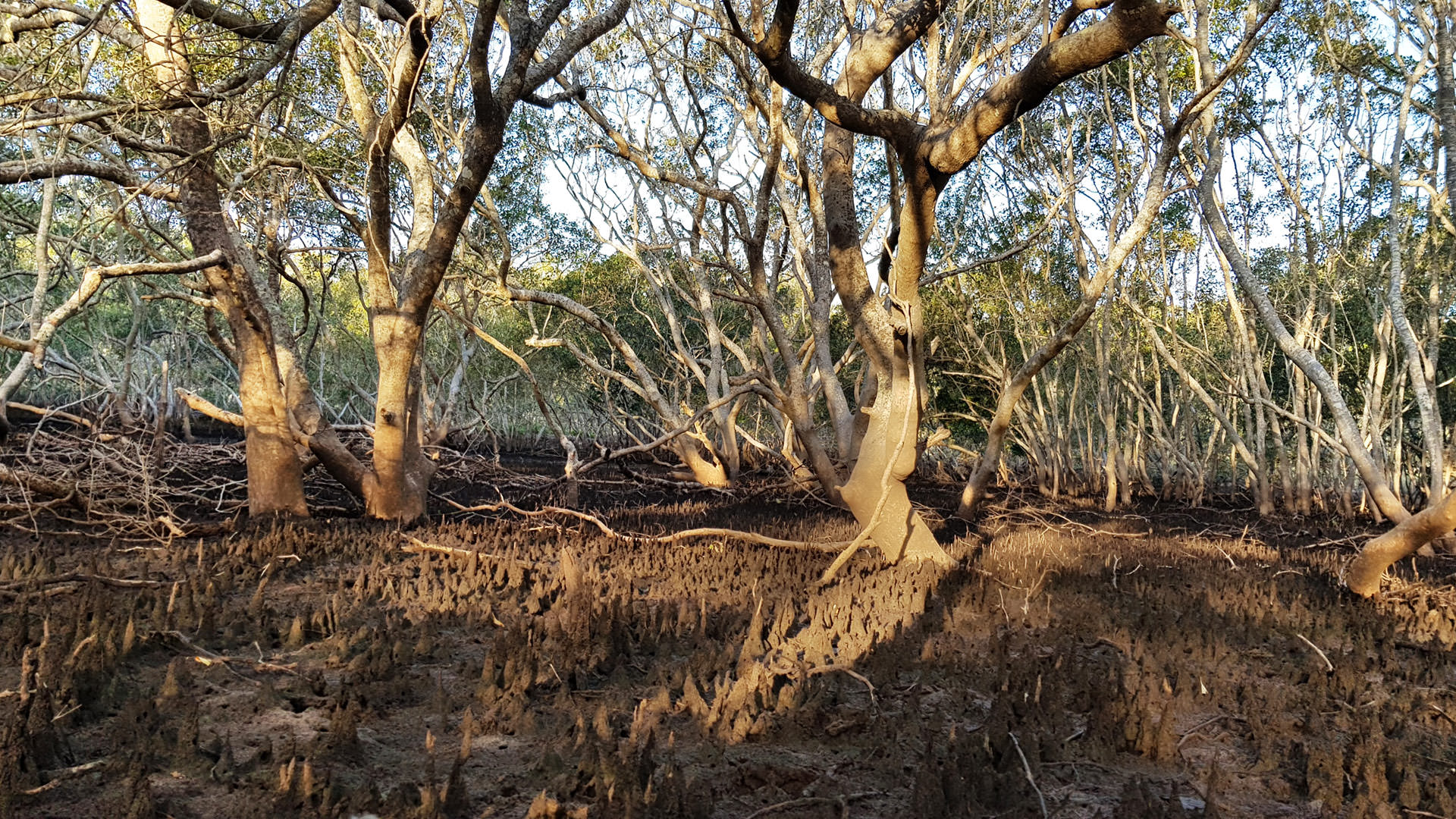|
|
WetlandUpdate September 2021Nitrogen processes
Nitrogen is essential to life on Earth and can be found in all living systems, however, in excess it can also be harmful to the environment. The nitrogen processes pages synthesise information on nitrogen processing in the landscape. The pages provide an integrated understanding of nitrogen related chemical processes, and describes the complicated science related to the inputs, processes, stocks, outputs and effects of nitrogen. A broad nitrogen cycle conceptual model has also been developed for the overall landscape, as well as specific conceptual models for lacustrine, mangrove, palustrine and rainforest systems. The conceptual models were compiled by researchers in collaboration with a wide range of stakeholders from Natural Resource Management groups, universities and government agencies and based on available scientific information. Wetlands play a key ecosystem service in the processing and storage of nitrogen. The nitrogen processes pages provide a comprehensive summary of these key processes, to inform management of aquatic and wetland systems. Wetland treatment systems for nitrogen removal: a synthesis The Wetland treatment systems for nitrogen removal factsheet provides details of a project that synthesises the results from wetland treatment system trials throughout Queensland. This project will address:
UpdatesUpdated layers on WetlandMaps and WetlandSummary
Updated Wetland Projects Search ToolAdditional projects have been added to the wetland projects search tool including a number from the Herbert River Catchment and Landcare Group, Greening Australia and the Hinchinbrook Shire Council. Additional links
WetlandUpdateThe WetlandUpdate is a regular bulletin sent to subscribers to provide you with the latest WetlandInfo resources and tools, as well as case studies, video information and new project fact sheets. WetlandInfo feedback and improvementsContact us via email for feedback, information or questions about wetlands. WetlandInfo feature speciesThe feature plant for September is the grey mangrove, Avicennia marina. Avicennia marina is a species of mangrove tree classified in the plant family Acanthaceae (formerly in the Verbenaceae or Avicenniaceae). It occurs in the intertidal zones of estuarine areas. The Grey mangrove is a highly variable tree, with three subspecies. It has been reported to tolerate extreme weather conditions, high winds, and various pests and diseases. It has smooth light-grey bark made up of thin, stiff, brittle flakes. It also has aerial roots (pneumatophores) that grow to a height of about 20 cm, and a diameter of 1 cm. These allow the plant to absorb oxygen, which is deficient in its habitat. These roots also anchor the plant during the frequent inundation of seawater in the soft substrate of tidal systems. Nitrogen is processed by mangroves, providing a vital ecosystem service. Mangrove forests are highly productive, and are a major long-term sink for nitrogen. Additional informationThis section is updated regularly, so stay tuned for more!Last updated: 28 September 2021 This page should be cited as: Department of Environment, Science and Innovation, Queensland (2021) WetlandUpdate September 2021, WetlandInfo website, accessed 8 May 2025. Available at: https://wetlandinfo.des.qld.gov.au/wetlands/resources/publications/latest-news/2021-07-18.html |

 — Department of the Environment, Tourism, Science and Innovation
— Department of the Environment, Tourism, Science and Innovation



